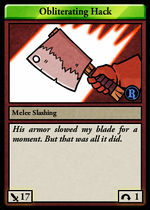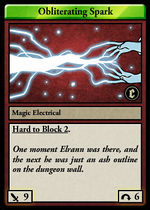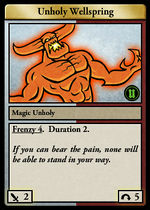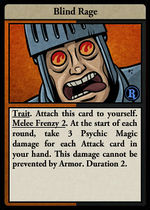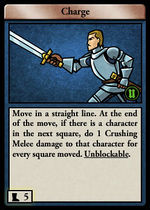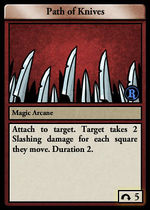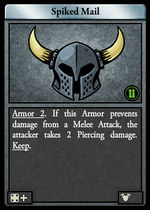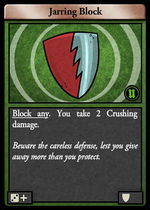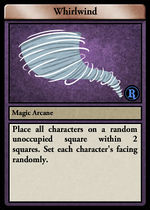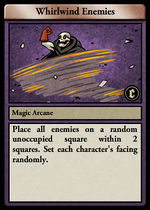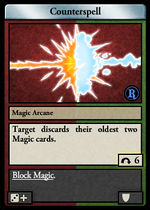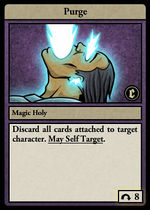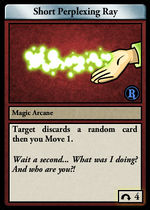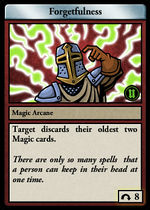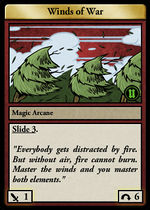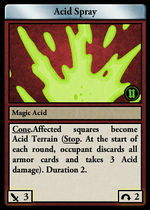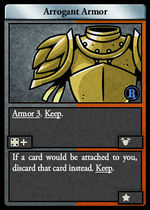A Guide to Character Builds
(Created page with "''Foreword: This guide is a culmination of approximately a year's worth of testing, playing and spectating multiple character builds in Card Hunter by [[User:Phaselock|Phaselo...") |
Revision as of 02:19, 20 January 2014
Foreword: This guide is a culmination of approximately a year's worth of testing, playing and spectating multiple character builds in Card Hunter by Phaselock. The author has experienced and witnessed all possible builds prior to the first ever expansion release of Card Hunter. All in all, this guide holds the experience worth of two beta resets and game release, more than 1000 MP games played/spectated and more than 300 MP cards played and tested since Jan 2013. This guide is intended for beginners and veterans alike. It summarizes the types of character builds commonly found in Card Hunter and attempts to explain the various features supplemented with card examples. Enjoy!
There are (as of writing and post card draw nerf) three major types of character builds in Card Hunter. They are
- Build to Kill
- Build to Disrupt
- Build to Control
Almost all MP cards and character builds fall into at least one of three categories above.
Contents |
Build to Kill
| The simplest, easiest deck build available in game with more than 150 cards dedicated to dealing damage. Typical variants of death dealing include step attacks, burst damage, long range magical strikes, damage over turns (DoT), damage via cards in hand, life leech, area of effects, global damage, terrain etc. There are three attack types and thirteen damage types currently in game. A huge variety of damage options are available, ranging from cards like Obliterating Hack for close range melee damage to Obliterating Spark for long range magical strikes. Buff cards with Frenzy effects are natural synergy options, as is the ever popular Unholy Wellspring and Blind Rage. It is also possible to kill by movement through Charge or Path of Knives. Or by reflected damage from Spiked Mail. Even a successful Jarring Block can inflict damage! The question for players building to kill is often one of efficiency vs risk. You want to deliver the most damage with the least amount of cards to tip the balance of the game in your favor. And keep your characters out of harm's way in order to secure hp advantage. The choice usually boils down to a matter of personal preference, play style, map rotation, player demographics and meta game. There are so many options and combos to 'Build to Kill' with, with ever more added every expansion that would be exhaustive to list here. Suffice to say that building to kill is one of the most basic, popular and simplest ways to play Card Hunter that will never bore anyone looking to win by dealing death. |
|||||
Build to Disrupt
One of the most annoying ways to win is by disrupting the opponent's strategy through consistent negation of opponent's advantage. In any game, outcomes are not just bounded to the state of the pieces on a board. Forced resignation and frustration plays are valid ways to winning. There is also the saying 'A quitter never wins, and a winner never quits'. Forcing your opponent to quit is a tried and tested method of the ages.
| Card Hunter has many cards built for disruption. The most famous of which are Whirlwind and Whirlwind Enemies. These cards are highly efficient at disrupting enemy formation and position, creating havoc and sowing resentment. In general, builds that disrupt rely on annoying and frustrating the opposition by causing a breakdown in the opponent's buildup and or by negating opponent's game state advantage. A party reliant on formation to win will find Whirlwind Enemies pesky and annoying. Especially so when all moves have already been used to garner positional advantage. A party reliant on Magic spells will find Counterspell a nightmare. Debuff builds find Purge disruptive. And so on and forth. Disruption of game flow is usually dependent on a modicum of chance/luck. For instance, using Whirlwind Enemies could place the enemy right beside your vulnerable unit. Casting Counterspell on a full hand could hit absolutely nothing. Purge becomes a dead card against non-debuff builds etc. While some may argue that die rolls, hand draws and unit placement are already very luck based scenarios and the introduction of even more chance based elements is bad design, the very nature of table-top gaming is luck-based and winning/losing by luck is an intended feature. You will never hear a champion who say they won solely by skill and luck was not involved. A single Whirlwind Enemies used as a crucial game winner is not disruptive but tactical brilliance. As such, a build is considered disruptive if and only if the disruption is consistent to the point of being effective at negating any advantage. The attack here is two-pronged: reducing opponent's board/game advantage and influencing the mental state of the opposing human player. You may have spent multiple cards securing positional advantage only to see one card blow it all away. If you are rattled and unable to get your game together, then the disruption has succeeded and you would have played right into the enemy's hand. A build with one Whirlwind Enemies is not considered disruptive but another with ten Whirlwinds used every other turn is. |
||
Build to Control
Control in Card Hunter requires an understanding of the game state, both of your opponent and yourself. As such, it is considered to be one of the hardest build and gameplay style to pull off. The definition of the term 'Control' is unlike that of 'Disrupt'. Where disrupt affects by chance, control affects by devaluing the opponent's game state.
| For instance, a tankish attrition healing build designed to win via denial of the VP and lockdown of zones of control/LoS until a win condition is achieved. The winning line here is to wear the opponent down. If you can't get onto a VP to contest, you can't win. If you have high damage cards in hand but cannot see/hit the enemy, then the value of those cards plummet. If the opposition strategy is to get in close to deal damage, a position control build negates this strategy. Attack cards in hand are de-valued if you can't get close to the enemy. Control builds work best when information about the enemy's hand/build/game state is available. The more info the better. This is unlike disrupt builds. Winning by control usually means dominating one/multiple aspects of the opponent's game state. For instance, take a heavy discard build filled with Short Perplexing Ray, Forgetfulness etc. Since the number of cards in the opponent's hand is always visible, consistently forcing discards reduces the enemy's gameplay options. Do this turn after turn and the opponent's gameplay becomes curtailed. They could have freedom of movement but not enough attack cards in hand to play or vice versa. Since the opponent's options are reduced, his gameplay is controlled. |
Disruption or Control ?
The astute reader will by now realize that not all cards are built solely for damage or disruption or control only. Indeed, depending on the state of the game, the actual use of a card dictates its intended function. Some cards are deceptively hard to classify until the play is made. For instance, playing Short Perplexing Ray on a five card hand is disruptive, playing the same card on a two card hand is control. Playing Whirlwind Enemies at the start of a turn is disruptive, playing the same when the enemy has no cards in hand and sitting on VPs is control. Using Wall of Stone to isolate VPs at the start is disruptive, using the same with 2 victory stars left to win is control. As such, the flexibility of Short Perplexing Ray or Whirlwind Enemies or Wall of Stone is far higher than, say Obliterating Hack.
| Cards that can be flexibly used in game are highly valued as they represent a card advantage. These multi-role, multi-function cards are the linchpins of deck builds. An example is the Winds of War card. This single card fulfils both disruption, crowd control and synergizes with damage buffs in damage builds. Nevertheless, it is still susceptible to Counterspell and LoS disruption via Smoke Bomb or Wall of Illusion. For a card that fulfills so many roles, Winds of War is a card that screams "Pick me !". Another example are the Acid Spray or Acid Jet cards. These terraforming cards remove armor of occupants, impede movement and deal damage, fulfilling all three aspects of damage, disruption and control. Yet a single Hover or Teleport Self is sufficient to counter. Not all multi-role cards belong to wizards, Arrogant Armor is one such example. It is immune to DoT cards and debuffs while still providing damage reduction. Bearers of Arrogant Armor control the game by directing focus. Ignore the Arrogant Armor warrior and eat a fistful of damage or engage it and hope enough damage gets thru to make a difference. |
To conclude, whether a build is made to disrupt or made to control really depends on how the cards are used in active gameplay. If you constantly find yourself discarding high value cards, chances are your gameplay is being curtailed and controlled. If you find board advantage slipping away, its likely your opponent is playing to disrupt your tempo. The type of build to play is really a matter of personal preference and skill. Some will find disruption a great fun way to win and constantly build around this style. Others will only stick to damage. Then there will be the control freaks who stick by their way. Whichever the case, I hope this brief guide serves as an insight into the key types of character builds and their gameplay significance in Card Hunter. Enjoy the game and have fun!
Credits
Phaselock: Author of this guide.
